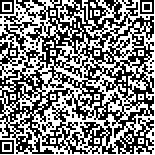| 引用本文: | 孙欢,张永东,于谨磊,胡金润,刘正文,苏雅玲.外源溶解性有机碳对抚仙湖甲壳类浮游动物碳源的贡献.湖泊科学,2017,29(4):887-895. DOI:10.18307/2017.0412 |
| SUN Huan,ZHANG Yongdong,YU Jinlei,HU Jinrun,LIU Zhengwen,SU Yaling.Contribution of allochthonous dissolved organic carbon to the carbon source of planktonic crustaceans in Lake Fuxian. J. Lake Sci.2017,29(4):887-895. DOI:10.18307/2017.0412 |
|
| 本文已被:浏览 7751次 下载 5355次 |

码上扫一扫! |
|
|
| 外源溶解性有机碳对抚仙湖甲壳类浮游动物碳源的贡献 |
|
孙欢1,2, 张永东1, 于谨磊1, 胡金润3, 刘正文1,3, 苏雅玲1
|
|
1.中国科学院南京地理与湖泊所湖泊与环境国家重点实验室, 南京 210008;2.中国科学院大学, 北京 100043;3.暨南大学, 广州 510632
|
|
| 摘要: |
| 外源溶解性有机碳(DOC)是湖泊碳库的重要组成部分,关于外源DOC对浮游动物的贡献及途径需要深入研究. 本研究在抚仙湖受控实验中添加13C标记的葡萄糖,通过分析样品中浮游植物与浮游动物的种类、数量、磷脂脂肪酸生物标志物及其稳定同位素特征,研究外源DOC对湖泊甲壳类浮游动物碳源的贡献比例及其变化. 结果表明:细菌、甲壳类浮游动物(象鼻溞)的δ13C值在加入葡萄糖后分别从-16.28‰和-23.88‰快速增加到5408.25‰和1974.7‰,而藻类磷脂脂肪酸(C18:2ω6)δ13C值从-27.07‰增加到342.44‰,增长的幅度表明添加的葡萄糖首先被细菌和浮游动物快速利用,而藻类只利用了一小部分. 同时细菌、颗粒性有机物(POM)和浮游动物的δ13C值在第1 d急剧增加,细菌的δ13C值远大于浮游动物和POM的δ13C值,之后细菌和POM的δ13C值开始下降,但浮游动物的δ13C值却仍在缓慢增加,进一步表明了DOC进入湖泊后首先被细菌吸收利用,而细菌吸收DOC后通过自身代谢作用形成细胞颗粒,浮游甲壳类动物通过摄食细胞颗粒来获得外源DOC. |
| 关键词: 外源溶解性有机碳 13C标记 碳源 甲壳类浮游动物 磷脂脂肪酸 抚仙湖 |
| DOI:10.18307/2017.0412 |
| 分类号: |
| 基金项目:国家自然科学基金项目(31370478,31670461)资助. |
|
| Contribution of allochthonous dissolved organic carbon to the carbon source of planktonic crustaceans in Lake Fuxian |
|
SUN Huan1,2, ZHANG Yongdong1, YU Jinlei1, HU Jinrun3, LIU Zhengwen1,3, SU Yaling1
|
|
1.State Key Laboratory of Lake Science and Environment, Nanjing Institute of Geography and Limnology, Chinese Academy of Sciences, Nanjing 210008, P.R.China;2.University of Chinese Academy of Sciences, Beijing 100043, P.R.China;3.Jinan University, Guangzhou 510632, P.R.China
|
| Abstract: |
| Allochthonous dissolved organic carbon (DOC) is of importance in lake carbon stock, therefore, the contribution and pathways of allochthonous DOC to planktonic crustaceans deserves further study. A controlled experiment was performed through adding glucose labeled with δ13C in water from Lake Fuxian. By analyzing the samples of phytoplankton and zooplankton species, quantity and phospholipid fatty acid (PLFA) biomarkers and their carbon stable isotope, the contribution of allochthonous DOC to crustacean zooplankton carbon source was investigated. The results showed that after adding glucose, δ13C values of bacteria and planktonic crustaceans(Bosmina) increased rapidly from -16.28‰ to 5408.25‰ and -23.88‰ to 1974.7‰, respectively, whereas the δ13C value of chlorophyceae increased from -27.07‰ to 342.44‰. The growth rate showed that bacteria and zooplankton firstly utilized the adding glucose. The δ13C values of bacteria, particulate organic matter (POM) and zooplankton increased sharply at the first day, moreover, the δ13C value of bacteria is much higher than that of zooplankton and POM. After the first day, δ13C values of bacteria and POM decreased, by contrast, zooplankton δ13C value increased slowly. This suggests that allochthonous DOC is firstly utilized by bacteria and form cell particles via the metabolism of bacteria. Subsequently, planktonic crustaceans can utilize allochthonous DOC by grazing cell particles. |
| Key words: Allochthonous dissolved organic carbon 13C labeling carbon source planktonic crustaceans phospholipid fatty acid Lake Fuxian |